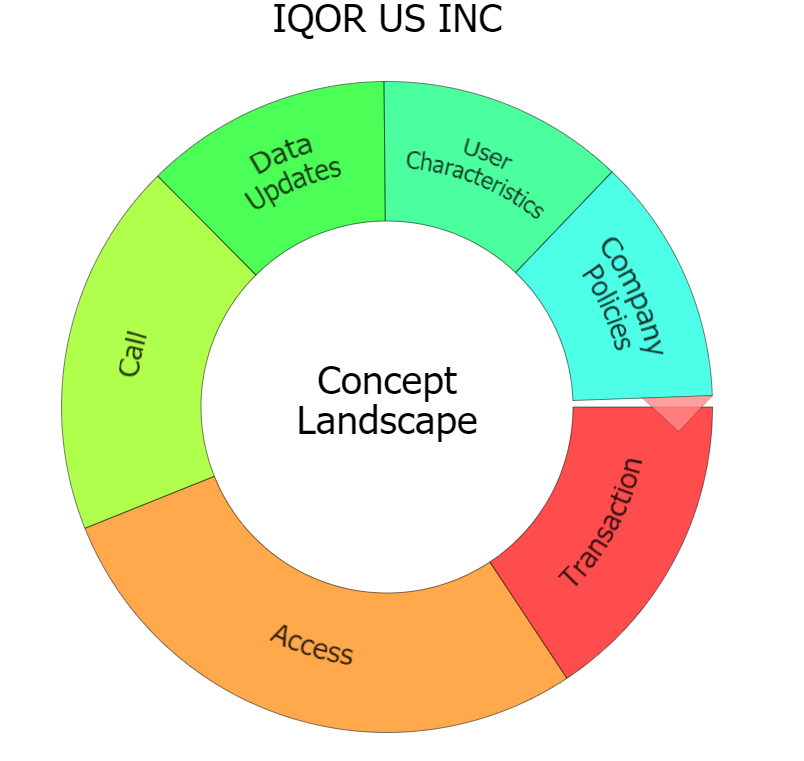Patent Backed Bankruptcy Report
Company Background:
iQor, Inc. provides business process outsourcing services. The company offers customer interaction solutions, such as customer care, technical support, revenue generation, accounts receivable management, social recruiting, EQ testing, scalable training, and defined career paths; aftermarket product support services, which include supply chain solutions, technical services, strategic implementation, BRD design requirements, blueprint development, and service implementation; and data solutions and analytics, including business intelligence, interaction analytics, and applied analytics. It serves media and wireless, digital infrastructure, consumer electronics, telecommunications, transportation and logistics, utilities, retail/e-tail, financial services and insurance, and healthcare industries. iQor, Inc. was formerly known as IntelliRisk Management Corporation and changed its name to iQor, Inc. in August 2007. The company was founded in 1998 and is headquartered in Saint Petersburg, Florida with locations in the United States, Canada, China, Mexico, Panama, the Philippines, India, Trinidad and Tobago, and Poland. iQor, Inc. operates as a subsidiary of iQor Holdings Inc. On September 10, 2020, iQor US, Inc. filed a voluntary petition for reorganization under Chapter 11 in the U.S. Bankruptcy Court for the Southern District of Texas. It is in joint administration with iQor Holdings Inc.
Address
Ownership
Industry
200 Central Avenue One Progress Plaza 7th Floor Saint Petersburg, FL 33701United States
Private
Business process outsourcing services
Chapter Type | Case Number | Assets | Liabilities | Industry/Description |
11 | 4:2020bk34498 | $1 Billion – $10 Billion | $10 Billion – $50 Billion | Software Technology |
Portfolio Value Range | Asset Valuation Range | Total Assets Valuation Range | Liability Range | Leverage Ratio Range |
$500 Mil – $10 Billion | $500 Mil – $10 Billion | $500.275 Mil – $10.001 Billion | $500 Mil – $7.500 Billion | 0.0667 – 20.0022 |
Patent Portfolio Breakdown
11 Active US Patents

Featured Assets
Abstract:
The APPARATUSES, METHODS AND SYSTEMS FOR A DATA TRANSLATOR (“Data-Translator”) implement an application on a computerized system, whereby the Data-Translator may collect consumer account information from a variety of data sources, arrange the collected data to score each consumer with regard to their contactability, and devise consumer-specific contact strategies for automatic execution. In one embodiment, the Data-Translator may translate imported consumer data updates into a format complying with existing consumer data records in the database, and incorporate the updates into the related consumer data records.
Claim 1:
1. An automated, data integrating, processor-implemented method, comprising:
accessing a database of consumer information;
obtaining information of at least one consumer account from the accessed database;
generating a list of updated account information based on the obtained information, comprising:
obtaining a timestamp of the obtained information, forming a query based on the timestamp of the obtained information, determining what information was updated after the timestamp, and storing the information updated after the timestamp in the list of updated account information;
storing the obtained information of the at least one consumer account in temporary memory space;
querying a list of existing consumer accounts based on the obtained information of the at least one consumer account;
if the obtained information of the at least one consumer account matches with an existing consumer account, storing the obtained information of the at least one consumer associated with the matched consumer account;
if the obtained information of the at least one consumer account does not match with any existing consumer account, creating a new consumer account based on the obtained information of the at least one consumer account;
receiving a data report specification including at least a limiter and a chooser;
generating a database query statement based on the chooser;
querying tables in a database associated with the limiter using the database query statement;
retrieving at least one data value corresponding to the chooser based on the querying the tables; and
generating a report comprising the at least one data value.
Abstract:
The APPARATUSES,
METHODS AND SYSTEMS FOR A CALL SEARCHER implement efficient and scalable
monitoring, regulation, and allocation of communications resources within an
enterprise. In one embodiment, a call searcher processor-implemented method is
disclosed, comprising: obtaining an indication to perform call analytics on a
communications session; recording the communications session upon obtaining the
indication; analyzing via a processor the recording to determine call ratings;
obtaining a call tagging rule; associating a call tag with the communications
session based on the call ratings and the call tagging rule; obtaining a review
request for the communications session; providing a notification of the call
tag and the recording of the communications session for review upon obtaining
the review request; obtaining an indication to modify the communications
session in response to providing the notification; and modifying the
communications session according to the obtained indication.
Claim 1:
1. A call searcher processor-implemented method, comprising:
obtaining an indication to perform call analytics in a real-time communications session;
recording the communications session as a plurality of media packets and storing the recorded media packets corresponding to a real-time communications session data in a recorded calls database;
upon obtaining the indication to perform call analytics, extracting from the database of recorded calls a subset of media packets corresponding to a portion of the stored real-time communications session data comprising communications packet data from a single participant for the purpose of performing analytics on said extracted real-time communications session data;
utilizing a dynamic data-structure tracking syntax-configured string and the extracted media packet data to generate a query and obtaining based on said query at least one session analysis rule from a database containing a plurality of rules, for evaluating and performing the analysis on the extracted communications session data;
analyzing via a processor the extracted real-time communications session data and applying the at least one session analysis rule to said session data;
generating a query and obtaining based on said query at least one possible call rating from a database of possible ratings for the real-time communications session;
dynamically applying the obtained at least one session analysis rule to the obtained possible ratings for the real-time communications session;
evaluating the obtained call ratings based on the applied session analysis rule and generating at least one call tag for the session;
associating the call tag with the communications session, wherein the call tag indicates that a violation of at least one session analysis rule has occurred; and
generating and sending automatic notification including the call tag indicating violation of at least one session analysis rule and requesting supervisor review and action for the real-time communications session being analyzed while the sessions is being conducted.
Abstract
The
APPARATUSES, METHODS AND SYSTEMS FOR A FINANCIAL TRANSACTION TAGGER
(hereinafter “FTT”) implement efficient and scalable monitoring, regulation,
and allocation of computational processing, data, labor, and/or the like
resources within an enterprise. In some embodiments, the FTT may facilitate, in
various implementations, tagging transactions with transaction characteristics
through the use of universal variables and economical interface features. In
one embodiment, transaction data associated with a transaction and including at
least a transaction identifier may be received. The transaction data may be
analyzed, and contextual rules may be applied to the transaction to tag the
transaction with transaction characteristics.
Claim 1:
1. A processor-implemented method comprising:
receiving transaction data associated with an enterprise-based transaction and including at least a transaction identifier;
analyzing via a computer processor the received transaction data;
determining via the processor that a contextual rule of a plurality of contextual rules for different transactions is triggered based on the analysis of the transaction data;
utilizing at least one universal variable to obtain the contextual rule from a plurality of contextual rules for different transactions, wherein the universal data variable comprises an intermediate data object that allows access to a plurality of database relational structures, disparate databases and external data sources, and wherein at least one universal variables is organized into a hierarchical structure comprising a family, a subfamily and a field name components;
applying the applicable contextual rule to the transaction data that triggered the contextual rule;
tagging the transaction data with transaction characteristics based on the contextual rule;
evaluating and determining via the processor that additional transactional characteristics are needed for the transaction based at least partially on the evaluation of the contextual rule; and
extracting additional transaction characteristics using a table-tracking syntax configured string based on the contextual rule and tagging the transaction with the additional set of transaction characteristics.
.


